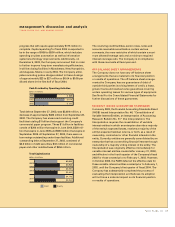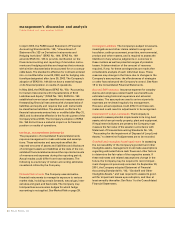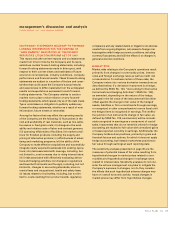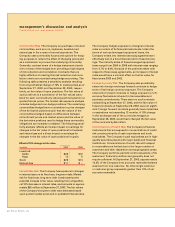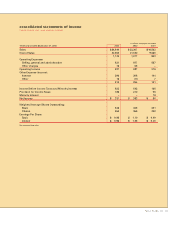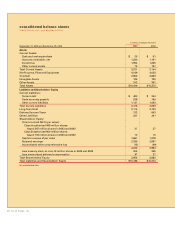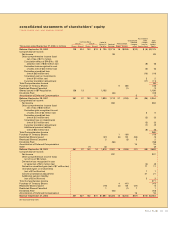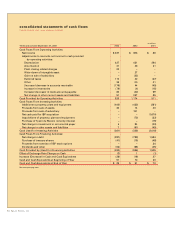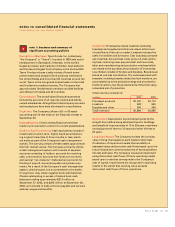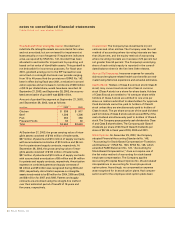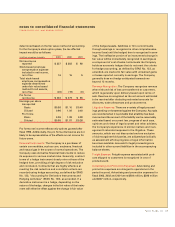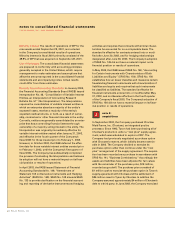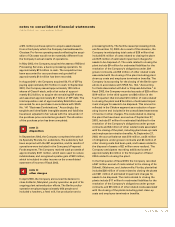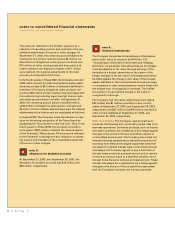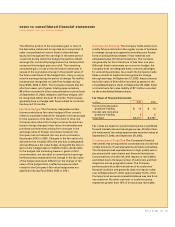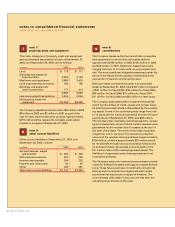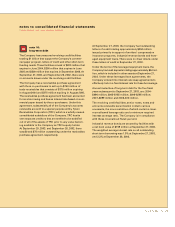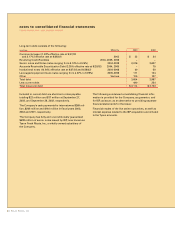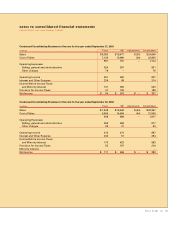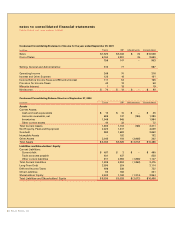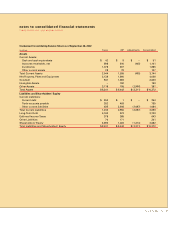Tyson Foods 2003 Annual Report Download - page 39
Download and view the complete annual report
Please find page 39 of the 2003 Tyson Foods annual report below. You can navigate through the pages in the report by either clicking on the pages listed below, or by using the keyword search tool below to find specific information within the annual report.
Tyson Foods, Inc. 37
notes to consolidated financial statements
TYSON FOODS, INC. 2003 ANNUAL REPORT
determined based on the fair value method of accounting
for the Company’s stock option plans, the tax-effected
impact would be as follows:
in millions, except per share data 2003 2002 2001
Net income as
reported $ 337 $ 383 $ 88
Stock-based employee
compensation expense
included in net income,
net of tax 16 15 5
Total stock-based
employee compensation
expense determined
under fair value based
method for all awards,
net of tax (20) (19) (8)
Pro forma
net income $ 333 $ 379 $ 85
Earnings per share
As reported
Basic $0.98 $1.10 $0.40
Diluted 0.96 1.08 0.40
Pro forma
Basic 0.96 1.09 0.38
Diluted $ 0.95 $1.07 $0.38
Pro forma net income reflects only options granted after
fiscal 1995. Additionally, the pro forma disclosures are not
likely to be representative of the effects on net income for
future years.
Financial Instruments: The Company is a purchaser of
certain commodities, such as corn, soybeans, livestock
and natural gas in the course of normal operations. The
Company uses derivative financial instruments to reduce
its exposure to various market risks. Generally, contract
terms of a hedge instrument closely mirror those of the
hedged item, providing a high degree of risk reduction
and correlation. Contracts that are highly effective at
meeting the risk reduction and correlation criteria are
recorded using hedge accounting, as defined by SFAS
No. 133, “Accounting for Derivative Instruments and
Hedging Activities” (SFAS No. 133), as amended. If a
derivative instrument is a hedge, depending on the
nature of the hedge, changes in the fair value of the instru-
ment will either be offset against the change in fair value
of the hedged assets, liabilities or firm commitments
through earnings or recognized in other comprehensive
income (loss) until the hedged item is recognized in earn-
ings. The ineffective portion of an instrument’s change in
fair value will be immediately recognized in earnings as
a component of cost of sales. Instruments the Company
holds as economic hedges that do not meet the criteria
for hedge accounting, as defined by SFAS No. 133, as
amended, are marked to fair value with unrealized gains
or losses reported currently in earnings. The Company
generally does not hedge anticipated transactions
beyond 12 months.
Revenue Recognition: The Company recognizes revenue
when title and risk of loss are transferred to customers,
which is generally upon delivery based upon terms of
sale. Revenue is recognized as the net amount estimated
to be received after deducting estimated amounts for
discounts, trade allowances and product terms.
Litigation Reserves: There are a variety of legal proceed-
ings pending or threatened against the Company. Accruals
are recorded when it is probable that a liability has been
incurred and the amount of the liability can be reasonably
estimated based on current law, progress of each case,
opinions and views of legal counsel and other advisers,
the Company’s experience in similar matters and man-
agement’s intended response to the litigation. These
amounts, which are not discounted and are exclusive
of claims against third parties, are adjusted periodically
as assessment efforts progress or legal information
becomes available. Accruals for legal proceedings are
included in other current liabilities in the accompanying
balance sheets.
Freight Expense: Freight expense associated with prod-
ucts shipped to customers is recognized in cost of
products sold.
Advertising and Promotion Expenses: Advertising and
promotion expenses are charged to operations in the
period incurred. Advertising and promotion expenses for
fiscal 2003, 2002 and 2001 were $504 million, $396 million
and $337 million, respectively.


